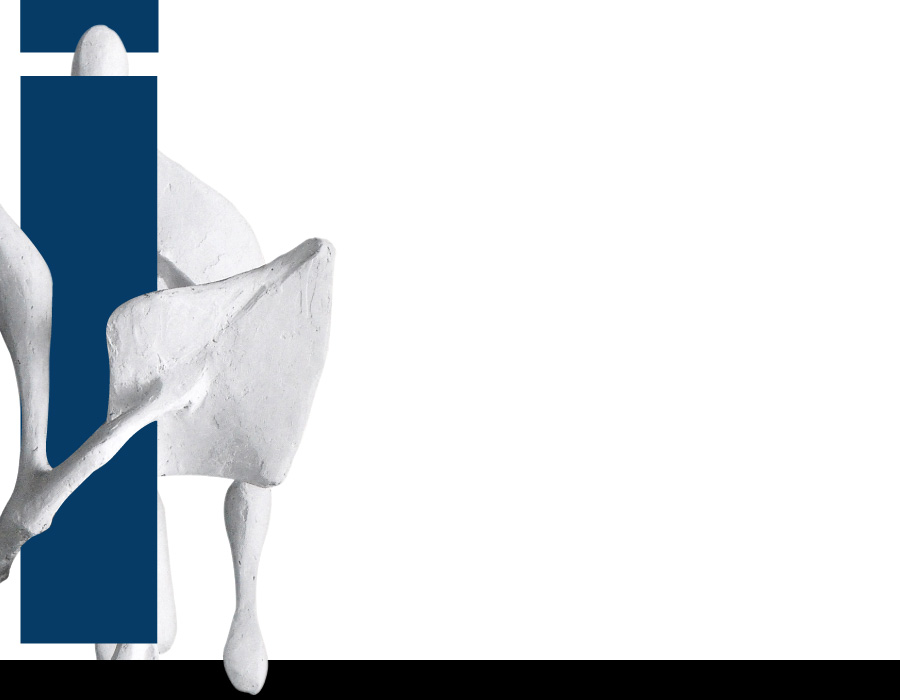
The family tree of the Farner family goes back to 1520: close examination reveals an impressive line of blacksmiths akin to a dynasty. In her early childhood, the artist would go to the forge with her uncle: she would spend much time listening to the noise of the hammer striking out a piece on the anvil.
1916 End of the year. Towards the end of 1916, Ulrich Farner moves with his family to a farm in Wilen. This little village is on the border of the Zürich and Thurgovia cantons. The artist receives her primary schooling in Wilen and Unter-Stammheim where she learns to read and write in gothic script.
1919 Margaretha Farmer is fascinated by the construction of a half-timbered house opposite the family farm: 'This profoundly affected me, as by observing the masons' daily efforts, I understood that it was possible to create new forms, with one's own hands. Up until then, nothing around me had changed, but I saw a house develop chamber by chamber, like a sort of monumental sculpture, and the smell of plaster remains closely associated with this first impression.'
1926 Completion of secondary schooling. The family situation is difficult; Margartha Farner studies accounting.
1928 Becomes an au pair in Le Locle (Neuchâtel canton), as she wishes to learn French.
1929-1930 A series of small jobs in Stein-am-Rhein, Schaffhousen and Winterthur.
1932 Moves to Zürich. Margaretha Farner lives with one of her sisters.
1933 First attempts at sculpture in plastiline (modelling clay) and in earthern clay. Goes to the Petit Dôme café – faithful to the Cabaret Voltaire tradition – where she finds the Zürich artistic community. Anni Blume and August Frey, her painter friends, introduce her to Hans Jacob Meyer, figurative sculptor, who becomes her teacher. Though close to the avant-garde, he does not wholeheartedly espouse their beliefs: Hans Jacob Meyer was linked with Georges Grosz and shared his tastes for African masks and the Bénin heads with Margaretha Farner.
1934 Portraits in plaster of her teacher and of Théodore Frey (brother of the painter Auguste), as well as a portrait of a child from a live model. Africanised head in stone. First prize in sculpture in the city of Zürich.
Margaretha Farner sees an exhibition at Zürich Kunsthaus called Abstrakte und Surrealistische Malerei, Plastik (11 October - 4 November 1934), that shows works by Arp, Ernst, Giacometti, Miró and Gonzalez.
1935 The artist comes to Lucerne Kunstmuseum to see These-Antithese-Synthese, a huge exhibition bringing together 22 paintings and sculptures by Arp, Braque, Calder, Chirico, Derain and Erni (24 February-31 March 1935). A stay in Paris makes her realise that she is not destined for the commissioned sculpture that is practised in Switzerland at that time.
1936 1936 From now on, she starts to study sculpture in Paris. The sculptor Hermann Haller – one of the most famous artists or his generation (1880-1950) – gives his young colleague an amount allowing her to complete her project. This master of traditional sculpture admires Margaretha Farner's talent after her success in the city of Zürich competition, where he discovered her.
4 months' stay in Paris. Moves into a studio in the Impasse de Rouen. Regularly attends the sculpture academies: l'Académie Ranson, with for teacher Charles Malfray. His way of correcting his students' work deeply shocks her; l'Académie de la Grande-Chaumière, with Robert Wlérick; l'Académie Collarossi, with Marcel Gimond. Having good relationshps with his students, the sculptor gives advice wihout interfering in their work. Marcel Gimond encourages Margaretha Farner in her development and waives her course fees.
During this time, Margaretha Farner returns regularly to Zürich, when she is very low on funds.
But she was never tempted to return for good.
The meeting with Alberto Giacometti on the terrace of the Le Dôme café in 1936 marks a major step in Margaretha Farner's development. Giacometti invites his compatriot to visit his studio, where she discovers Le Palais à quatre heures du matin ('Palace at 4 a.m.') (1932-1933). Seeing this work would exert such a great fascination over her that it overshadowed everything that was around it. This work would influence her constructions that she would make starting in 1943 in New York.
1937 Spring. Margaretha Farner stays four months in Florence on invitation of her friend Anni Blume who had secured a scholarship to study there. Trip to Rome, Pompeii and Naples. Move to Settignano where she made a portrait of Anni Blume and a life-size standing statue, abandoned in the guests' garden. Production of erotic designs and small-scale sculptures that would be sold upon returning to Paris.
Autumn. Moves into a new studio in the rue Cotentin. Composition of large statues which the artist stores, with the private owner's consent, in the building's courtyard. Commission of a head, shoulders and torso portrait from a live model which Margaretha Farner develops an aesthetic ideal close to Egyptian art of the Amarna period.
1938-1939 Abandoning her works at rue Cotentin, Margaretha Farner takes a studio in the rue Vercingétorix. Soon she meets, at the Dôme, Patrick Waldberg, her future husband, who invites her to take Marcel Mauss' course in ethnography at the Ecole Pratique des Hautes Etudes from mid-November 1938 to January 1939. Marcel Mauss introduces his students to a programme combining sociology and ethnology: Ball games; Cosmological games; seasonal variations; the sociological year 1904-1905; Eskimos and cat's cradle.
Patrick Waldberg substitutes Margaretha's name for Isabelle ; she also gives up her surname for his.
Together, they take Paul Rivet's classes, and regularly visit the Musée de l'Homme, the Musée Guimet and the Louvre.
Meeting of Patrick's friends Louise and Michel Leiris as well as Georges Bataille. Isabelle joins the secret society Acéphale, at the request of Georges Bataille. The sacred conspiracy brought together initiates who kept quiet about their activities. The composition of the group is still difficult to reconstruct entirely; However, according to the rare testimonies we have, it had to unite Georges Bataille, Colette Peignot (Laure), Patrick Waldberg, George Ambrosino, Roger Caillois, Pierre Klossowski, Jacques Chavy, René Chenon, Pierre Andler, Jean Rollin, Kelemen, Georges Dussat and Isabelle Waldberg, whose presence is certain in the last six months of the year 1938. (This exhaustive list is established thanks to the correspondence exchanged by Isabelle Waldberg and Patrick Waldberg in 1943.)
WIthin Acéphale, Isabelle Waldberg takes care of translating Nietzsche's texts and making an analysis which she would convey to the group during their sessions. The study which she made was idologically opposite to the Nazi and Fascist interpretations of the same texts. Furthermore, she undertook analysis and translation of 'The Will To Power' together with Jacques Chavy.
7 November. On Laure's death (Colette, Laure, Lucienne Peignot) Isabelle and Patrick Waldberg provide company for Bataille who undergoes a deep crisis.
End of the year. The couple move in with Bataille, 59 bis rue de Mareil in Saint-Germain-en-Laye. The activities of the secret society intensify, as if to fill the hole left by the first female member of the group. The group meets at the foot of an oak tree struck by lightning in the Saint-Nom-La-Bretèche forest, and on Laure's tomb which is located not far from there.
1940 Beginning of the year. Return of Isabelle Waldberg to Paris.
Tuesday 5 March. Birth of Michel, Patrick Farner Waldberg in Saint-Mandé. Michel Leiris is godfather to the child
10 June. Popular exodus. Isabelle Waldberg succeeds in catching a train with her baby to reach the South of France. The journey would be particularly difficult. While the Surrealist group assembles in Marcheille around André Breton, welcomed at the Villa Air-Bel by the American Rescue Committee for intellectuals, Isabelle sees all steps for reaching the United States disappear one by one.
August. Isabelle Waldberg leaves Marcheille and moves to the Haviland family's villa in Mont-Louis (Pyrénées-Orientales). She stays there alone with her son for two months.
End of October. Josée and Frank Haviland join her at Mont-Louis. Exchange of postcards with André Masson: Isabelle visits him several times in Montredon where he is hosted by Countess Lily Pastré.
Publication details in Monographs and general works.
– Biography 1911 to 1940 –
